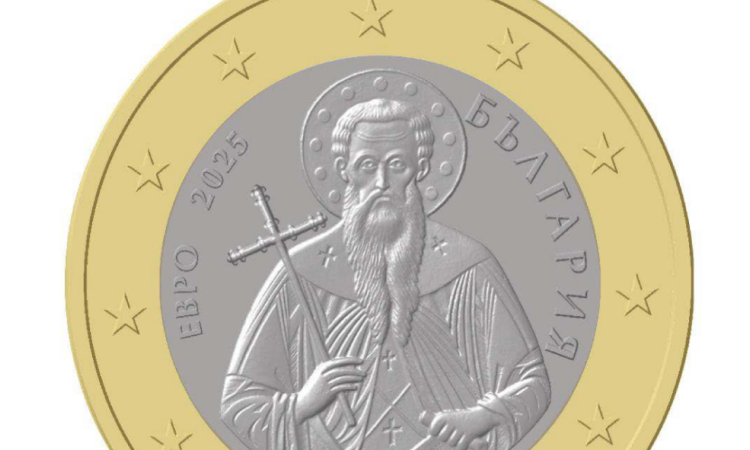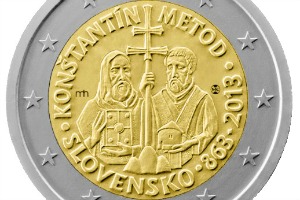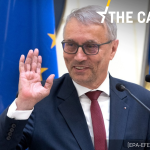Christian symbols could feature prominently on the one- and two-euro coins that will enter circulation after Bulgaria joins the eurozone, according to a proposal yet to be agreed at the EU level, where some countries have opposed similar attempts in the past.
The Bulgarian Central Bank unveiled on Monday (12 February) the nationally agreed design of the Bulgarian euro coins, which will be released after the country adopts the single currency. If Bulgaria fulfills the necessary criteria, the most difficult being inflation, this could happen on 1 January 2025 at the earliest.
Eurozone countries are allowed to mint coins with their own symbols on the national side. This image, however, must be accepted by the remaining eurozone members and the European Commission.
The Bulgarian Central Bank said it had sent the proposed design of the Bulgarian coins to the Commission and to the member states on 18 January.
The proposed design of the Bulgarian one-euro coin features Saint Ivan Rilski (St. John of Rila, 876 – c. 946), known as the first Bulgarian hermit. His followers founded many churches in his honor, including the famous Rila Monastery. The saint is featured with a halo with eleven dots, somewhat resembling the 12 stars on the EU flag.
The proposed two-euro coin design features the inscription “God save Bulgaria” on the edge of the coin.
Judging from past experience with other countries, the proposed designs may raise eyebrows.
In 2012, eurozone countries objected to the design of a Slovak commemorative €2 coin issued to mark the 1,150th anniversary of the arrival of Saints Cyril and Methodius in Moravia. Following consultations, the halo of the saints was removed.
However, if the motivation was to remove religious symbols from the design, the objectors did not entirely succeed: On the Slovak 2-euro coin, Cyril and Methodius hold a Christian double cross, standing on the middle peak of a mountain with three peaks.
At that time, the revamped design has been met with unease by the Bulgarian press. During Communism, painters and sculptors were requested by the authorities to portray Cyril and Methodius without halos.
The EU is divided as to what place to dedicate to Christian values and symbols.
The EPP, in particular the Christian Democrats, insist that Christian democracy means making politics according to Christian values.
Conversely, the socialists and the greens push for laicity to prevail.
An attempt to make mention of Europe’s Christian roots in the EU constitution failed back in 2004, together with the entire project, which was rejected following referendums in France and the Netherlands in 2005.
[Edited by Zoran Radosavljevic]
















